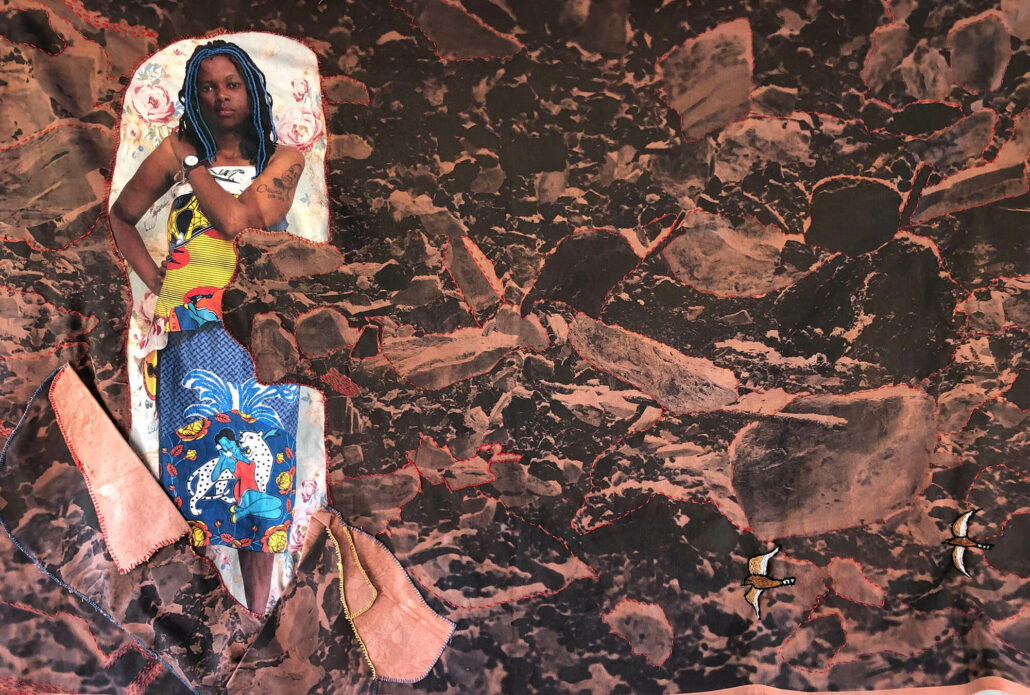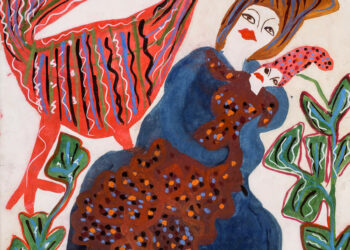The exhibition ‘Inheritance’ presents visual artist Pippa Hetherington’s work for the first time in France at Bonne Espérance Gallery. ‘Inheritance’ allows visitors to revisit and understand part of South Africa’s colonial past in a sensitive, intimate and personal way.

Clay. © Pippa Hetherington
As the artist explains, “it felt important to decentralise my white female South African experience and tell my story to a European audience with no feelings of resolve or solutions, just to say it as it is – trauma, history and memory unedited.” The exhibition installation, created by Hetherington and German curator Nisha Merit, features textile works floating against the exhibition walls, cut-out photographs, interwoven fibres and hanging dolls, visually evoking the work of memory. Hetherington sews and weaves. “You are supposed to see the scars and you are supposed to see the distortions”, comments Merit. To perfect this result, the artist weaves diverse and surprising materials and techniques, such as rock pigment, latticework, and embroidery. The images presented come from the artist’s personal family corpus, drawn from family albums and everyday domestic settings. Hetherington looks to her family’s history and socio-cultural heritage as a starting point for her work. Her family’s roots go back to the 1820 English settlers, whose arrival in South Africa led to tensions and wars with the local population, already violated by years of colonisation, the repercussions of which are still felt today. By presenting personal images in a public setting and transforming their materiality, the artist invites visitors to question their history.
In the gallery, the interplay of gazes and the tactile approach to photography provide a sensory experience of the past, the territory and the frontiers beyond the confines of the photographic frame. Strong, powerful women of all ages and social and ethnic backgrounds face the viewer. Artists, friends, and colleagues are all part of Hetherington’s entourage, for whom collaboration, human relationships and solidarity are central issues in her practice. Exhibited at Bonne Espérance Gallery, these works interrogate history, the spoken and the unspoken, comfort and discomfort, and bring a postcolonial and feminist discourse to Parisian soil. As gallery director Scott Billy points out: ‘the history of French colonialism until very recently was presented as a triumph. Hetherington allows one to think about the different sides of the story.’ Despite their geographic distance, the artist’s images weave strong intellectual links between South African history and the French colonial past.
Hetherington’s work decompartmentalises photography’s documentary function and its link to reality to give us a glimpse of the medium’s limits in immortalising, bearing witness and making history. With memory and trauma, and history, there is both beauty and distress. The artist explains that cutting, transforming, and re-making can become part of healing and recognising the emergence of the new. Her organic works, composed of fragments and textiles, cut and sewn together again, show us what was captured on film and evoke what remains erased, forgotten or taboo, opening the door to alternative, restorative stories.
Julie Bonzon is an independent curator specialising in photography. In 2020 she founded the Photographic Collective, of which Pippa Hetherington is a member.
The exhibition is on view from the 1st of July to the 29th of August, 2023. For more information, please visit Bonne Espérance Gallery.



